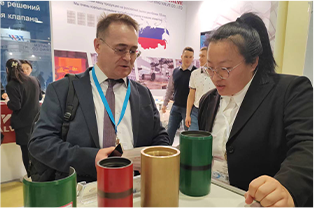- Afrikaans
- Albanian
- Amharic
- Arabic
- Armenian
- Azerbaijani
- Basque
- Belarusian
- Bengali
- Bosnian
- Bulgarian
- Catalan
- Cebuano
- Corsican
- Croatian
- Czech
- Danish
- Dutch
- English
- Esperanto
- Estonian
- Finnish
- French
- Frisian
- Galician
- Georgian
- German
- Greek
- Gujarati
- Haitian Creole
- hausa
- hawaiian
- Hebrew
- Hindi
- Miao
- Hungarian
- Icelandic
- igbo
- Indonesian
- irish
- Italian
- Japanese
- Javanese
- Kannada
- kazakh
- Khmer
- Rwandese
- Korean
- Kurdish
- Kyrgyz
- Lao
- Latin
- Latvian
- Lithuanian
- Luxembourgish
- Macedonian
- Malgashi
- Malay
- Malayalam
- Maltese
- Maori
- Marathi
- Mongolian
- Myanmar
- Nepali
- Norwegian
- Norwegian
- Occitan
- Pashto
- Persian
- Polish
- Portuguese
- Punjabi
- Romanian
- Russian
- Samoan
- Scottish Gaelic
- Serbian
- Sesotho
- Shona
- Sindhi
- Sinhala
- Slovak
- Slovenian
- Somali
- Spanish
- Sundanese
- Swahili
- Swedish
- Tagalog
- Tajik
- Tamil
- Tatar
- Telugu
- Thai
- Turkish
- Turkmen
- Ukrainian
- Urdu
- Uighur
- Uzbek
- Vietnamese
- Welsh
- Bantu
- Yiddish
- Yoruba
- Zulu
casing pup joint
Understanding Casing Pup Joints Essential Components in Oil and Gas Drilling
In the oil and gas industry, various components work together to ensure the successful extraction of resources from beneath the Earth's surface. Among these components, casing pup joints play a critical role. These specialized tubing sections are integral to the casing string, providing flexibility and adaptability in drilling operations.
What Are Casing Pup Joints?
Casing pup joints are short lengths of pipe, typically ranging from 2 to 5 feet in length. They are designed to add specific lengths to the casing string, helping to achieve the desired total length necessary for a well. Casing strings are critical in oil and gas drilling, as they prevent the collapse of the wellbore, protect groundwater from contamination, and provide a conduit for the extraction of hydrocarbons.
The term pup can sometimes cause confusion, as it refers to a small part of a larger assembly; it's important to note that while these joints might seem insignificant due to their size, their function is anything but minor. Casing pup joints can be manufactured in various diameters and wall thicknesses to meet specific engineering requirements, which ensures their compatibility with the overall casing system.
Importance of Casing Pup Joints
1. Customization of Casing Strings Each well has unique geological and operational demands. Casing pup joints allow engineers to customize the total length of the casing string to match specific well conditions. This flexibility can contribute to the efficiency and effectiveness of the drilling process.
2. Facilitation of Drilling Operations The drilling environment can be challenging, and variations in well depths can complicate the installation of casing. Casing pup joints provide a quick and effective means to adjust the length of the casing string on-site, especially in situations where precise measurements are crucial for operational success.
casing pup joint

3. Pressure and Load Distribution Casing pup joints play a significant role in maintaining the integrity of the casing string under various pressure conditions. By distributing loads evenly, they help prevent structural failures that may arise from pressure fluctuations during drilling operations.
4. Enhanced Structural Integrity The use of pup joints can aid in maintaining the structural integrity of the wellbore. By ensuring that the casing string is properly aligned and supported, these joints help to minimize the risk of casing collapse, which can lead to costly repairs and downtime.
Installation and Maintenance
The installation of casing pup joints is a straightforward process, but like all drilling components, it requires careful handling and maintenance to ensure reliability. During installation, workers must ensure that the joints are properly threaded and sealed to prevent leaks. Regular inspections of the casing string, including the pup joints, are essential to catch any signs of wear or potential failure before they result in operational disruptions.
In the event of a failure or when modifications to the casing string are required, pup joints provide a simple solution. They can be replaced or added to the existing casing string without needing to remove the entire casing assembly, thus minimizing downtime and enhancing operational efficiency.
Conclusion
Casing pup joints may be small in size, but their impact on oil and gas drilling operations is significant. Their ability to customize casing strings, facilitate drilling operations, distribute loads, and enhance structural integrity makes them essential components in the drilling process. As technology and drilling techniques advance, the role of casing pup joints will continue to evolve, further underlining their importance in the quest for efficient and effective hydrocarbon extraction. Understanding these components is crucial for anyone involved in the oil and gas sector, as they form the backbone of successful drilling and resource extraction endeavors.
-
Tubing Pup Joints: Essential Components for Oil and Gas OperationsNewsJul.10,2025
-
Pup Joints: Essential Components for Reliable Drilling OperationsNewsJul.10,2025
-
Pipe Couplings: Connecting Your World EfficientlyNewsJul.10,2025
-
Mastering Oilfield Operations with Quality Tubing and CasingNewsJul.10,2025
-
High-Quality Casing Couplings for Every NeedNewsJul.10,2025
-
Boost Your Drilling Efficiency with Premium Crossover Tools & Seating NipplesNewsJul.10,2025







